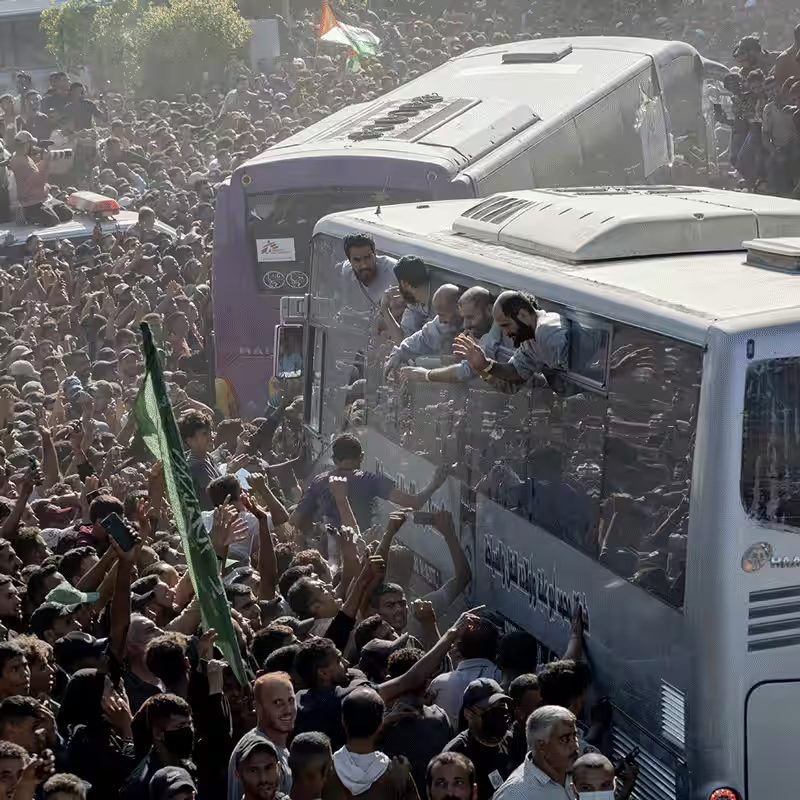Gaza’s fragile cease-fire has sparked bold declarations from world leaders—but on the ground, the path to lasting peace remains uncertain. As Phase 1 of the deal concludes with the release of 20 Israeli hostages and approximately 2,000 Palestinian prisoners, analysts warn that the hardest challenges lie ahead.
A Fragile Truce, Not Yet Peace
President Trump hailed the agreement as “peace in the Middle East,” while Secretary of State Marco Rubio called it “one of the most important days for world peace in 50 years”—a claim Trump jokingly extended to a century. But according to The New York Times Jerusalem bureau chief David Halbfinger, who’s reporting directly from the region, reality is far more complex.
“Everything has happened according to plan in Phase 1,” Halbfinger said in a recent interview. “But Phase 1 is really the low-hanging fruit of this plan. There’s a good chance that this could be the high-water mark of this whole process.”
What Comes After Phase 1?
The next phase hinges on two conflicting demands:
- Hamas insists on a full Israeli military withdrawal from Gaza.
- Israel and the U.S. demand that Hamas fully disarm and relinquish control before any withdrawal occurs.
This fundamental disagreement sets the stage for a potential deadlock. “We have the ingredients for a standoff,” Halbfinger noted.
Who Governs Gaza?
Another critical issue: governance. Both Israel and the Trump administration agree that Hamas should not remain in power. But there’s no consensus on who should replace it.
- Israel refuses to allow the Palestinian Authority (PA)—the internationally recognized governing body—to return to Gaza.
- The Trump plan proposes a technocratic interim administration, but it’s unclear where these officials would come from or how they’d gain legitimacy.
Security on the Ground
Meanwhile, reports suggest Hamas is already reasserting its presence in Gaza. “They’re trying very hard to show that there is no vacuum,” Halbfinger observed. This raises concerns about whether any new authority could effectively maintain order without triggering renewed conflict.
Historical Echoes
This isn’t the first time a prisoner-hostage exchange has raised hopes for peace—only for those hopes to fade. Past deals, such as the 2011 Gilad Shalit swap, led to temporary calm but no structural resolution.
What’s Next?
As diplomats prepare for Phase 2 negotiations, all eyes are on three key variables:
| Factor | Challenge |
|---|---|
| Israeli Withdrawal | Hamas demands it upfront; Israel refuses without security guarantees. |
| Disarmament | Hamas has not agreed to lay down arms. |
| Interim Governance | No viable, accepted alternative to Hamas has emerged. |
Conclusion: Hope Tempered by Realism
While the release of hostages and prisoners marks a humanitarian breakthrough, experts caution against conflating it with peace. As Halbfinger put it: “This could be the high-water mark.” Without a credible plan for governance, security, and mutual recognition, the region risks slipping back into violence.




